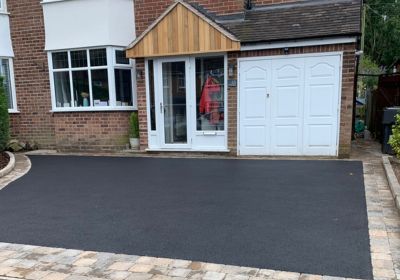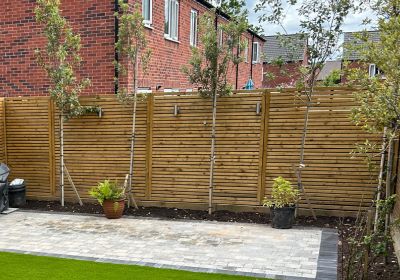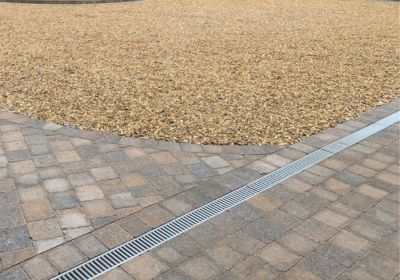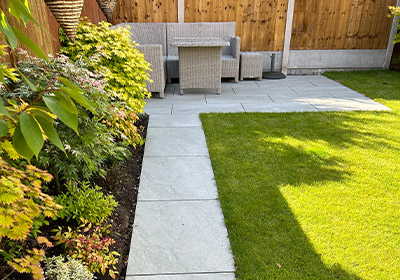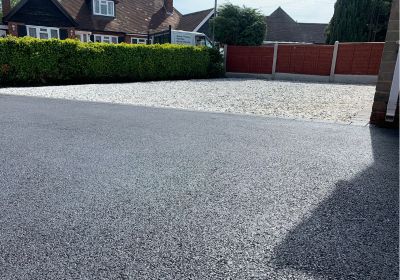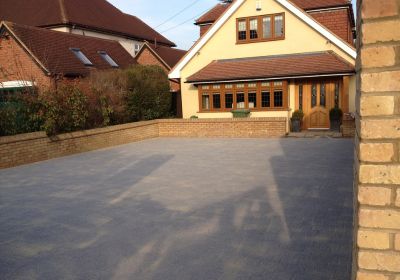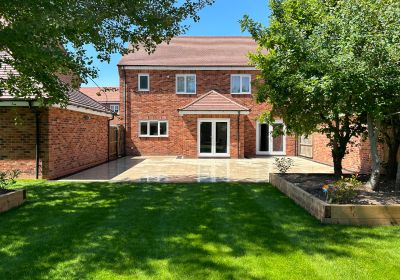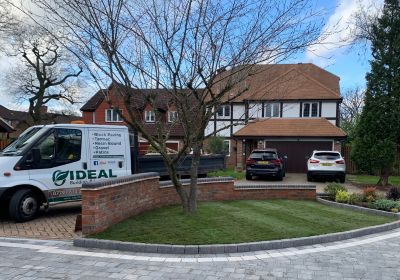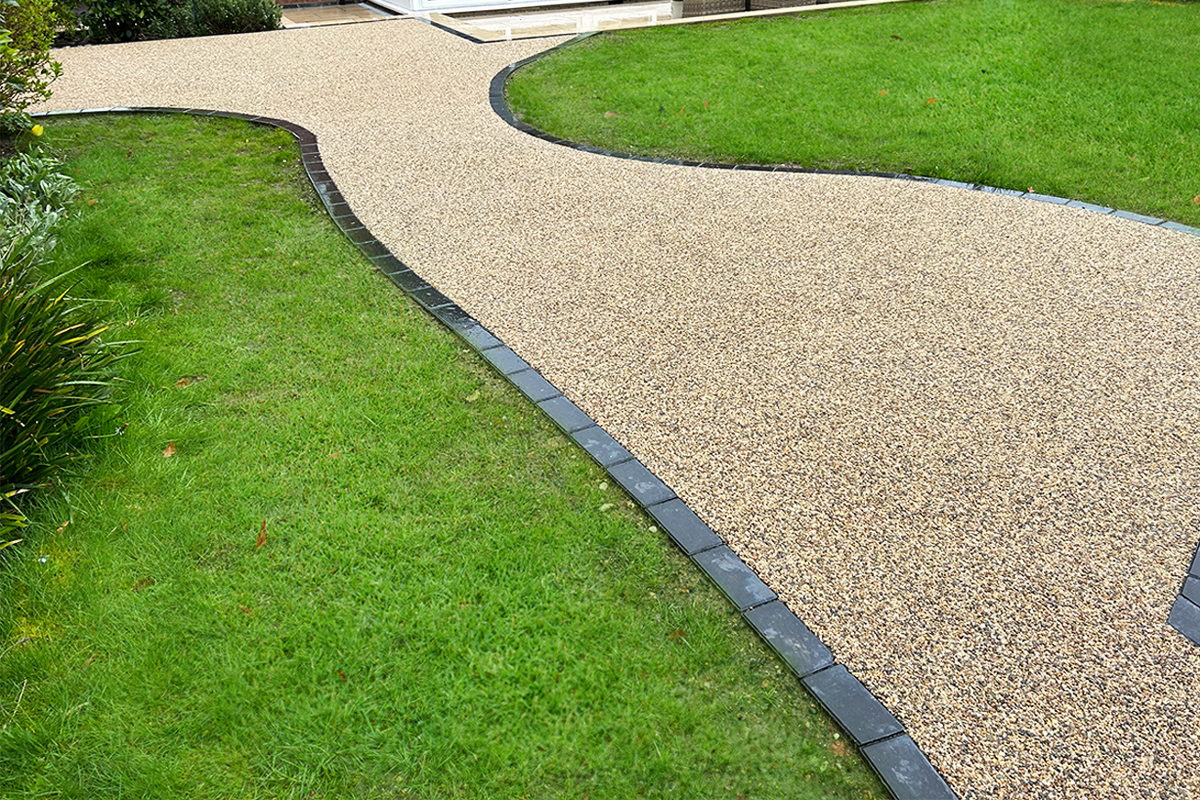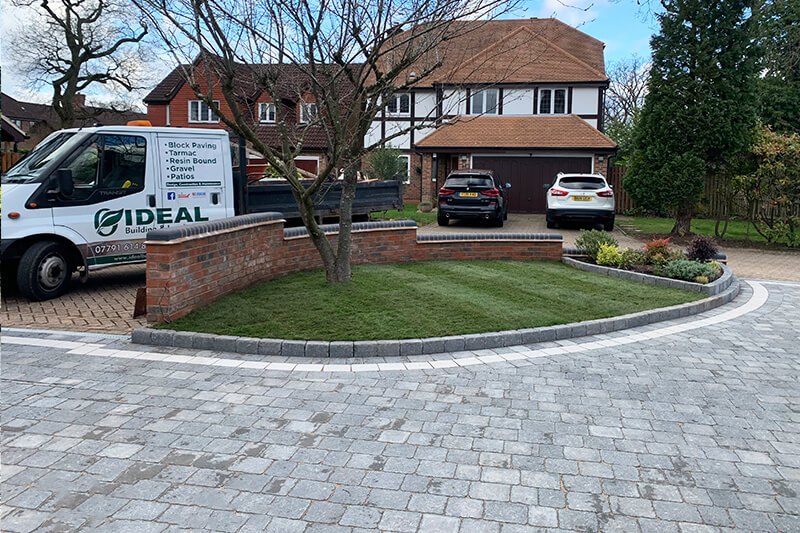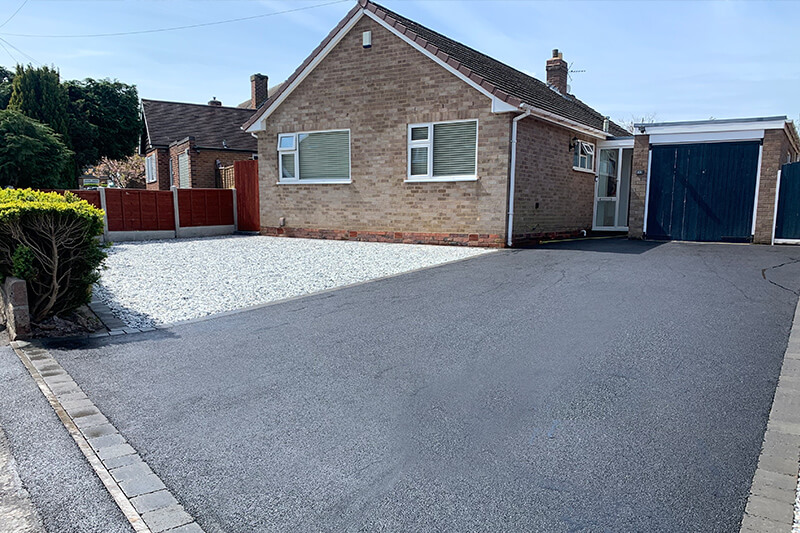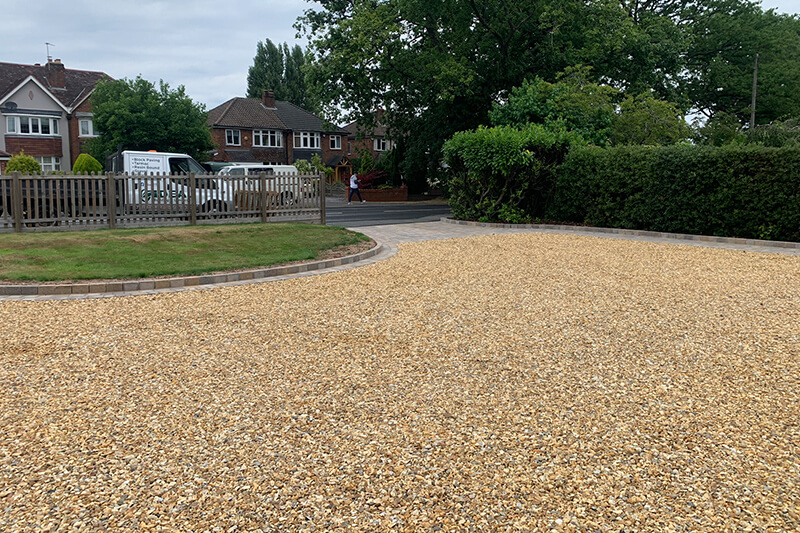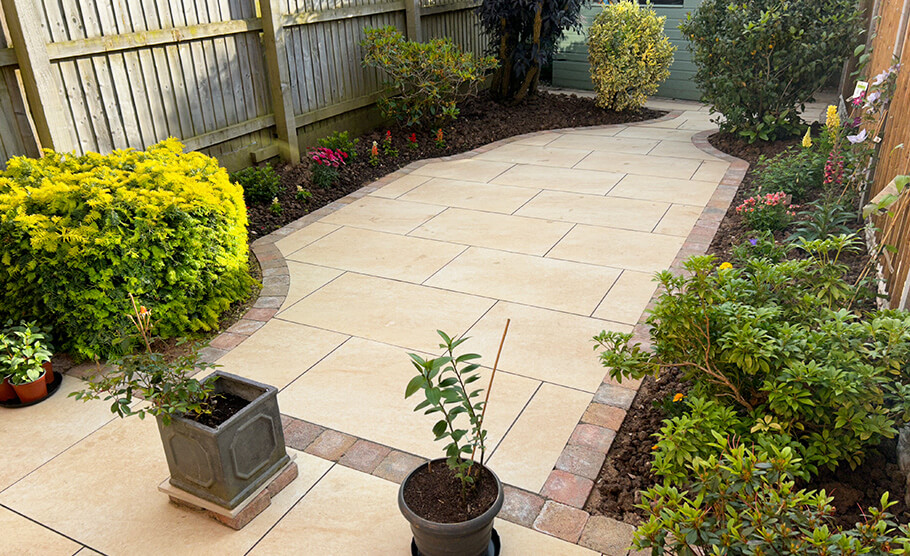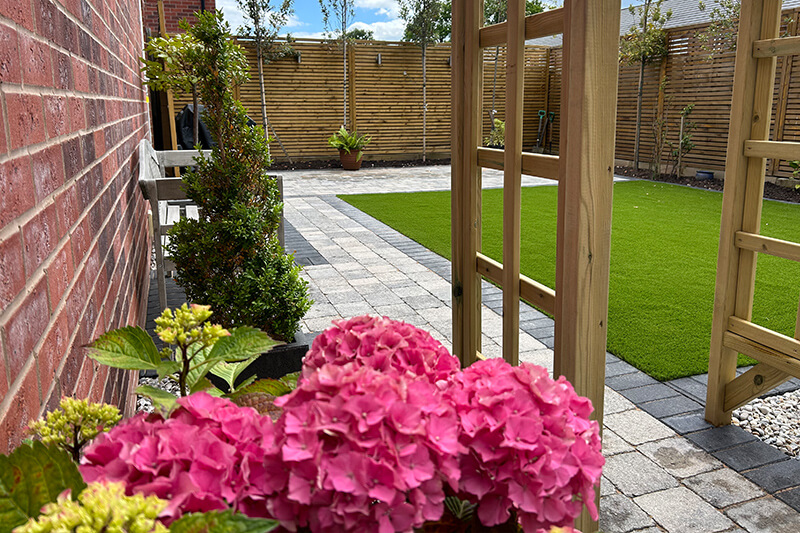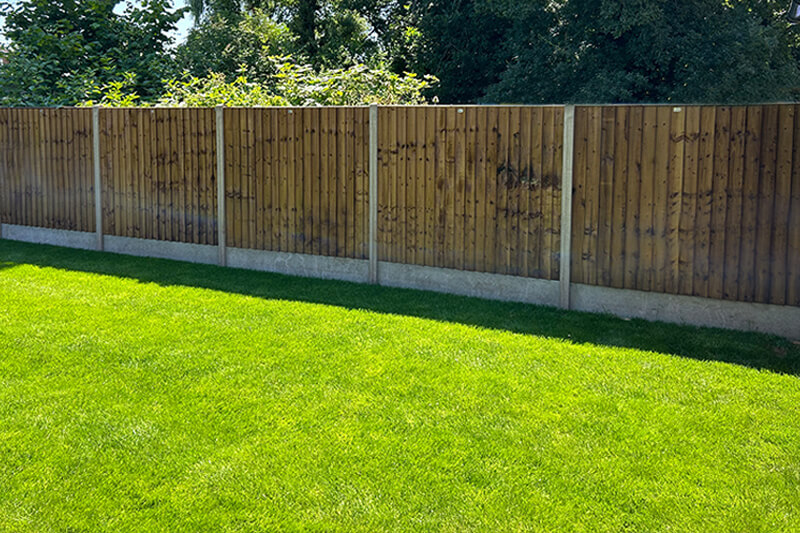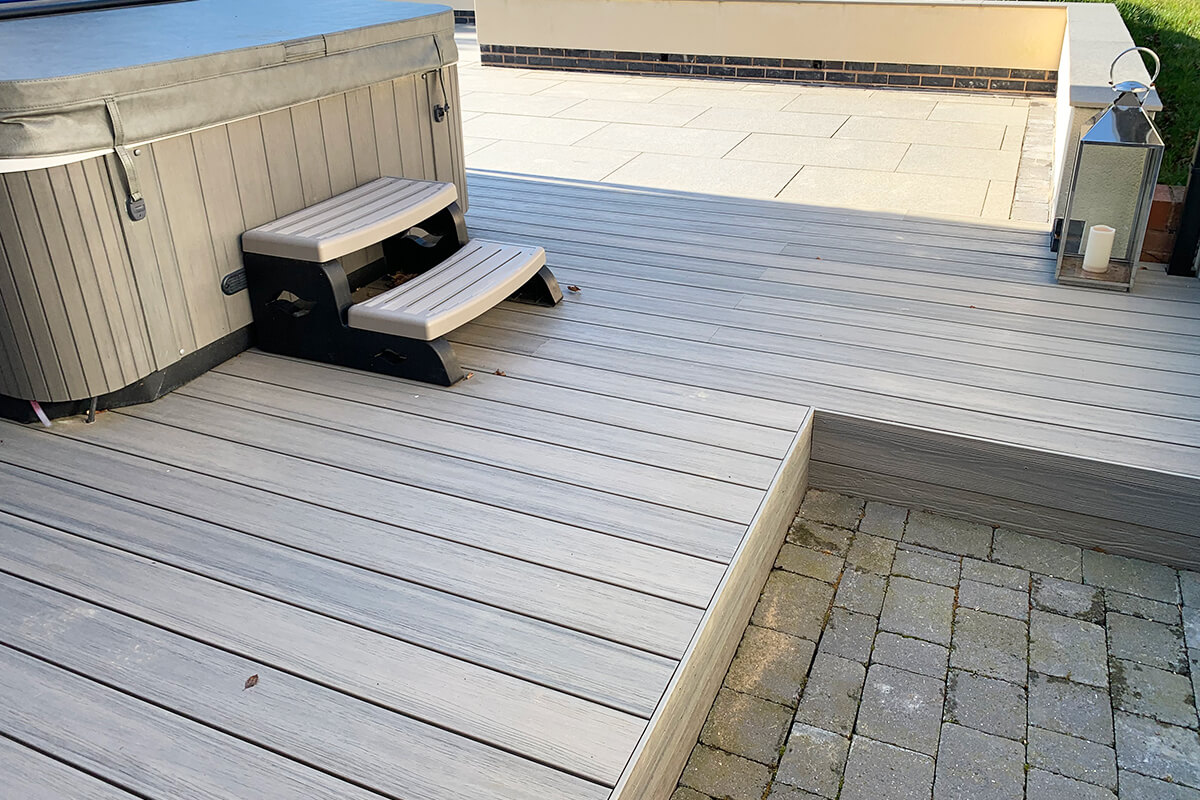A Comprehensive Guide To Garden Design
A garden is more than just an outdoor space; it’s an extension of your home, a personal sanctuary, and a place to create lasting memories. Yet, for many homeowners, the gap between a lacklustre lawn and a beautiful, functional garden seems vast.
This is where professional garden design comes in. It’s the art and science of transforming your outdoor area into a space that is not only stunningly beautiful but also perfectly suited to your lifestyle, enhancing your home’s curb appeal and overall property value.
Elements like a well-designed fence help define the garden’s boundaries, provide privacy, and add decorative value, all of which contribute to the overall garden feel and atmosphere.
Thinking about a garden transformation can feel overwhelming. Where do you start? What plants should you choose? How do you create a space that works for both quiet relaxation and summer entertaining? A professional garden designer can answer these questions, turning your vague ideas into a tangible, breathtaking reality that enhances your garden’s unique features and atmosphere.
As trusted experts in garden and landscape design, Ideal Building & Landscapes has guided countless homeowners through this exciting journey. This guide will walk you through the complete process, from the initial spark of an idea to the final, flourishing installation. We’ll cover everything you need to know to create the garden of your dreams.
What Is Garden Design?
It’s a common misconception that garden design, landscaping, and garden maintenance are one and the same. While they are related, they represent distinct stages of creating and caring for an outdoor space.
Garden Design
Garden design is the creative and planning phase. It’s about vision and structure. A professional garden designer works like an architect for your outdoor space. They assess your garden’s potential, understand your needs and style, and create a detailed plan.
This plan considers everything from the overall garden layout and flow to the specific materials and planting schemes. A thoughtful garden layout and the use of patterns in features such as fencing or planting arrangements can enhance both the functionality and visual appeal of the space.
Landscaping
Landscaping is the construction phase. A landscape gardener or landscaping company brings the garden design to life. This involves both hard landscaping, such as building patios, walls, and pathways, and soft landscaping, such as planting, turfing, and creating garden beds.
Garden Maintenance
Garden maintenance is the ongoing care required to keep your garden healthy and beautiful after the design and installation are complete.
The role of a garden designer is to bridge your vision with practicality, ensuring the final result is a cohesive, sustainable, and personalised space that you will love for years to come.
The Benefits of a Professionally Designed Garden
Investing in professional garden design offers significant returns that go far beyond simple aesthetics. Expert designers carefully consider the use of light, both natural sunlight and garden lighting, to create visually appealing and functional outdoor spaces.
For homeowners, the advantages are clear and compelling.
Enhancing Curb Appeal and Property Value
A well-designed garden is one of the most effective ways to boost your home’s curb appeal. First impressions count, and a beautiful front garden creates an inviting welcome. Incorporating stone features such as walls, paths, or ornamental elements can further enhance curb appeal and add lasting value to your property.
In the competitive property market, a professionally landscaped garden can add significant value to your home, making it a wise long-term investment.
Maximising Outdoor Living Spaces
Your garden should be a functional extension of your living area. A garden designer can cleverly zone your outdoor space to create distinct areas for dining, relaxing, and places where people can sit and unwind.
Whether it’s a sun-drenched patio for morning coffee, a shaded pergola for alfresco dinners, or a safe play area for children, professional garden design maximises every square metre.
A Personalised Design to Fit Your Lifestyle
Do you dream of hosting summer barbecues? Or perhaps you crave a quiet, secluded corner for reading? Incorporating shade features such as pergolas, arbours, or shade plants can create comfortable, personalised spaces for relaxation.
A professional garden designer takes the time to understand your lifestyle, creating a bespoke garden tailored to your needs. This ensures your outdoor space is not just beautiful, but a perfect fit for you and your family.
Long-Term Savings
While there is an upfront cost, professional garden design can save you money in the long run. A landscape gardener will select appropriate, high-quality materials and plants suited to your garden’s specific conditions, such as soil, sunlight, and local climate.
Choosing native plants can further reduce maintenance needs and support local ecosystems by attracting pollinators and beneficial wildlife. This reduces the risk of costly mistakes, like plants that fail to thrive or paving that cracks.
They can also incorporate sustainable, low-maintenance choices that lower ongoing costs and effort, and select plants and features that remain attractive and functional during winter for year-round enjoyment.
Gathering Inspiration for Your Garden
Utilising inspiration for your garden constitutes one of the most essential steps in the garden design journey. It provides you with the opportunity to explore an extensive range of design concepts, identify what excites you, and commence shaping your ideal garden.
It is crucial to begin by examining your own garden space; observe how the sunlight progresses, the distinctive features of your landscape, and the characteristics of your soil. These natural elements can generate ideas that are perfectly optimised for your outdoor environment.
For enhanced creativity, it is advisable to visit renowned gardens or attend events such as the RHS Chelsea Flower Show.
These experiences enable you to observe the latest trends and innovations in garden design at close proximity, from bold contemporary styles to lush, wildlife-friendly landscapes. You will discover inspiration in everything from the layout of an extensive garden to clever solutions for confined spaces.
It is essential to seek guidance from experienced garden designers or landscape architects. Their expertise can assist you in translating your inspiration into a practical plan, optimised for your lifestyle and the distinctive qualities of your garden.
Whether you are working with a compact garden or an expansive landscape, there are numerous approaches to create a space that reflects your personality and enhances the vitality of your home. Allow your imagination to explore, examine different styles, and enjoy discovering the possibilities that nature and garden design can provide.
Drawing Inspiration from Iconic Gardens and Shows
Prestigious garden exhibitions and renowned events such as the RHS Chelsea Flower Show constitute essential resources for professionals seeking to optimise their garden design capabilities.
These exhibitions showcase the most advanced techniques in horticultural design, from contemporary innovative approaches to established classical methods, and provide crucial insights into how professional garden designers implement their conceptual frameworks effectively.
When analysing these garden installations, whether through direct observation or via digital documentation, it is essential to focus on the strategic utilisation of raised bed systems, the structural impact of rock garden configurations, and the vertical implementation of climbing plant installations.
It is crucial to observe how various materials and architectural features, such as living wall systems or sculptural installations, are employed to establish focal points and provide structural organisation to the space. These design methodologies can be adapted and optimised to suit garden installations of varying scales, enabling the creation of distinctive and functional outdoor environments.
It is vital to document the planting combinations, the circulation patterns of pathway systems, and the integration of features such as water installations or lighting systems.
Each component is strategically selected to enhance the garden’s design aesthetic and spatial characteristics.
By utilising inspiration from these prestigious garden exhibitions and professional showcases, one can acquire innovative concepts and practical methodologies to develop garden installations that achieve both personalised character and exceptional quality standards.
The Garden Design Process: A Step-by-Step Guide
At Ideal Building & Landscapes, we follow a structured process to ensure a seamless journey from concept to completion. Our approach integrates both thoughtful garden design and innovative gardening techniques, such as vertical gardening and low-maintenance gardening, to achieve the desired outcome.
Here’s what you can expect when working with a professional landscaping company:
Step 1: Initial Consultation & Site Survey
The journey begins with a conversation. We visit your home to discuss your goals, ideas, personal style, and how you want to use the space. We’ll also talk about your budget.
During this visit, we conducted a detailed site survey, measuring the space and assessing key factors like soil type, sun exposure, drainage, and existing features such as grass.
Step 2: Concept Design & Planning
Armed with a deep understanding of your vision and the practicalities of your site, our designers get to work. We develop initial concept designs, which may include mood boards, hand-drawn sketches, or 3D digital plans.
This helps you visualise the final outcome and allows for collaborative feedback to refine the design until it’s perfect, including how to fill borders and beds for maximum visual impact.
Step 3: Materials & Planting Selection
This is where the garden’s personality truly comes to life. We guide you through choosing the right materials and plants that align with your style and the design plan. This includes:
- Hard Landscaping Materials: Paving slabs, decking boards, aggregates, walling materials, and stones for paths or borders.
- Planting Schemes: A carefully selected mix of trees, shrubs, perennials, and grasses that provide year-round interest, colour, and texture. Creating a vegetable garden with raised beds is also an option for increased productivity and ecological balance.#
- Features & Lighting: Water features, fire pits, pergolas, and a strategic lighting plan to add drama and extend the usability of your garden into the evening.
Step 4: Costing & Budgeting
Transparency is key. Once the design, materials, and planting are finalised, we provide a detailed, itemised quote. This transparent pricing ensures you know exactly what to expect, with no hidden costs.
If needed, we can discuss phasing the project over time to align with your budget, prioritising the core structural elements first.
Step 5: Construction & Installation
With the plan approved, our skilled team of landscape gardeners begins the transformation. This phase is typically split into two parts:
- Hard Landscaping: Our craftsmen construct the backbone of the garden, including patios, pathways, retaining walls, decking, and fencing. A wall can also be used to support vertical gardening or climbing plants, adding both structure and visual interest.
- Soft Landscaping: Once the structural work is complete, we bring in the greenery. This includes preparing the soil, implementing the planting scheme, turfing new lawns, and planting trees.
Step 6: Final Touches & Aftercare
The project isn’t finished until the last detail is in place. We add the final touches, such as installing lighting, placing garden furniture, and setting up irrigation systems.
We also provide you with comprehensive aftercare advice to help you maintain your beautiful new garden and ensure your plants thrive for years to come.
Adding Vertical Elements to Your Garden
Optimising your garden space necessitates considering opportunities beyond ground-level cultivation. Incorporating vertical elements establishes a strategic approach to maximise spatial utilisation, particularly within compact garden environments, whilst simultaneously generating visual appeal and establishing dimensional depth.
Vertical features can transform a conventional flat landscape into a dynamic, multi-layered outdoor environment that enhances spatial perception and cultivates a more engaging atmosphere.
Climbing plant varieties represent a fundamental choice for incorporating height and organic softness into your garden design. Whether you possess an expansive garden or operate within a compact courtyard environment, training plant species such as ivy, clematis, or jasmine along walls, boundary structures, or trellis systems can establish a luxuriant, verdant backdrop whilst creating an attractive focal element.
These botanical selections not only provide additional cultivation opportunities but also contribute to colour enhancement, aromatic qualities, and wildlife habitat integration within your garden ecosystem.
Additional vertical installations, including living wall systems or elevated planter configurations, offer innovative solutions for introducing enhanced plant diversity and textural variation. These elements can be strategically utilised to delineate distinct zones, establish privacy screening, or incorporate striking design features.
Through incorporating vertical elements effectively, you can establish a garden environment that demonstrates vitality and visual interest, regardless of your available spatial parameters.
Incorporating Climbing Plants and Vertical Features
Utilising climbing plants and vertical features enables property owners to optimise their garden space effectively. When incorporating climbing species such as roses, wisteria, or honeysuckle along walls, trellises, or pergolas, it is essential to create an impressive exhibition of blooms and foliage that elevates visual interest and establishes substantial height and architectural drama.
Vertical installations such as living walls or tiered planters serve as strategic focal elements, providing enhanced planting capacity whilst introducing diverse textures and colours throughout the space.
These installations prove particularly valuable in compact gardens, where maximising spatial efficiency is crucial, though they additionally contribute structural definition and visual appeal to expansive garden schemes.
When selecting climbing species or vertical installations, it is vital to assess the specific environmental conditions of your property, including sunlight exposure, soil composition, and maintenance requirements, to guarantee optimal plant performance.
Strategic selection and placement of vertical elements consistently enable property owners to establish gardens that appear vibrant, multi-dimensional, and distinctively personalised.
Designing a Kitchen Garden
Designing a kitchen garden establishes a rewarding approach to bringing fresh flavours and natural beauty directly to your doorstep.
Whether you possess a small garden or a large garden, a well-planned kitchen garden enables you to maintain a steady supply of vegetables, herbs, and even fruit trees, all within convenient reach.
It is essential to commence by considering the layout of your garden space. Raised beds consistently rank as a popular choice for kitchen gardens, offering excellent drainage, easy access, and a neat, organised appearance.
Pathways between beds enhance your ability to tend to your plants and harvest your crops efficiently. You can also incorporate features such as rock gardens for herbs that require well-drained soil, or utilise climbing plants such as beans and peas to maximise vertical space effectively.
It is crucial to include a mix of elements, fruit trees for seasonal harvests, beds for vegetables, and dedicated spots for your preferred herbs. The location of your kitchen garden establishes the foundation for success: select a sunny spot with quality soil, and consider how the layout will integrate with the remainder of your outdoor space.
With thoughtful planning and strategic creativity, you can establish a kitchen garden that enhances both beauty and productivity, adding a sense of accomplishment and a burst of vitality to your garden.
Popular Garden Styles & Ideas
Looking for inspiration? Here are some popular garden design styles that our clients love:
- Modern and Minimalist: Characterised by clean lines, geometric shapes, and a limited colour palette. Think smooth rendered walls, sleek porcelain paving, and structural planting with grasses and architectural shrubs. Patterns in fencing and layout add visual interest and harmony to these contemporary spaces.
- Cottage and Traditional English: A romantic, informal style bursting with colour and life. This garden design features winding paths, climbing roses, and densely packed flowerbeds filled with classic perennials like lavender, foxgloves, and delphiniums.
- Mediterranean-Inspired: Create a holiday vibe at home with gravel gardens, terracotta pots, and drought-tolerant plants like olive trees, lavender, and rosemary. A sun-drenched patio and rustic pergola complete the look.
- Wildlife-Friendly and Sustainable Gardens: Designed to support local ecosystems, these gardens include features like wildflower meadows, log piles for insects, ponds for amphibians, and nectar-rich plants for bees and butterflies, as well as supporting other wildlife such as birds and insects.
- Rock Garden: A rock garden features carefully arranged rocks and stones, often mimicking natural rocky outcrops or alpine environments. It uses plants that thrive in well-drained, low-water conditions, creating a striking and low-maintenance landscape.
- Formal Potager: Inspired by Italian kitchen gardens, a formal potager combines ornate design elements, intricate layouts, and features like fountains and fruit trees. This style is ideal for larger gardens and often benefits from professional consultation.
- Living Wall: A living wall transforms a plain wall or fence into a lush, decorative feature. This vertical garden creates a striking green tapestry of cascading plants, making it a perfect statement piece or focal point for small spaces like balconies or patios.
- Outdoor Living Spaces: Today’s gardens are extensions of our homes. We design and build fully functional outdoor rooms, including outdoor kitchens with pizza ovens, cosy seating areas with fire pits, and elegant dining spaces under pergolas.
How Long Does Garden Design & Landscaping Take?
The timeline for a garden transformation can vary significantly based on several factors.
- Small Projects (e.g., a new patio or small planting scheme) might take 1-2 weeks.
- Medium-Sized Gardens (e.g., a full redesign of a typical suburban garden) often take 3-6 weeks.#
- Large or Complex Projects (e.g., involving extensive earthworks, complex structures, or large-scale planting) can take several months.
Factors that influence the duration include the complexity of the design, site access, lead times for materials, and, of course, the unpredictable British weather.
Garden Design Costs: What to Expect
The cost of a garden design project depends heavily on its scale and ambition.
- Design-Only Services: A professional garden design plan can range from a few hundred pounds for a simple concept to several thousand for a detailed, large-scale plan.
- Full Design and Build: For a complete transformation by a landscaping company, costs can range from £5,000-£10,000 for a small garden to £15,000-£30,000 for a medium-sized project, and upwards of £50,000 for large, high-spec gardens.
The main factors affecting cost are the size of the garden, the complexity of the design, and the quality of materials selected.
While it might be tempting to cut costs, remember that investing in professional design and quality craftsmanship saves money in the long run by avoiding mistakes and creating a durable, lasting space.
Why Choose Ideal Building & Landscapes?
Choosing the right partner is crucial for bringing your garden vision to life. Ideal Building & Landscapes is a leading landscaping and building company with extensive experience transforming gardens.
Our commitment to quality, transparency, and customer satisfaction sets us apart. We blend creative design with expert craftsmanship to deliver exceptional results, on time and on budget. Our extensive portfolio showcases a diverse range of projects, from sleek modern patios to lush traditional gardens, all tailored to our clients’ unique lifestyles.
Begin Your Garden Transformation Today
A professionally designed garden is an investment in your home and your quality of life. It provides a beautiful, functional space for you to enjoy for years to come.
From the first creative spark of an idea to the final flourishing plant, the journey of creating a garden is an exciting and rewarding one.
Contact Us Today
If you’re ready to transform your outdoor space, we’re here to help.
Contact Ideal Building & Landscapes today for a no-obligation consultation, and let’s start designing the garden you’ve always dreamed of.
Frequently Asked Questions
Do I need planning permission for my new garden design?
Most garden landscaping projects fall under “permitted development” and do not require planning permission. However, permission may be needed for certain structures (like large outbuildings), significant changes to ground levels, or work on properties in Conservation Areas or on listed buildings. A professional landscaping company can advise you on this.
Can I phase my garden project over time to spread the cost?
Absolutely. Phasing is a great way to manage your budget. We can help you prioritise the essential structural elements first (like patios and walls) and plan for subsequent phases of planting or feature installation at a later date.
What maintenance is required after installation?
The level of maintenance will depend on your chosen design and planting scheme. We can design low-maintenance gardens if you’re short on time. After installation, we provide a detailed aftercare guide to help you look after your new garden, covering watering, feeding, and pruning.

